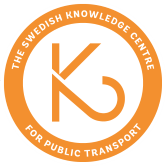Based on an understanding of automation as various technological and organisational configurations in the making, this article aims to deepen insights into the governance arrangements shaping how automation is being introduced in public transport. Using a qualitative case study, we analyse the introduction of automated shuttle buses in Barkarbystaden, in the north-west of the Stockholm region, Sweden. Participant observation and qualitative interviews have been used to explore the governance arrangement forming automation in this case. We use planning literature on ‘soft spaces’ to discuss how automation emerges in connection to established processes and actors. Our findings show how the governance arrangement in this case transferred existing roles and responsibilities to the collaboration involving driverless shuttles, something which gives the bus operator a new and influential role in smart mobility in public transport. The article concludes with a discussion about the need to think critically about the ways in which roles, relations and responsibilities may be shaped and reshaped in collaborative governance arrangements around smart mobility, and to develop a more clearly articulated policy and planning agenda which clarifies the long-term public vision for automation in infrastructure and transport planning.
